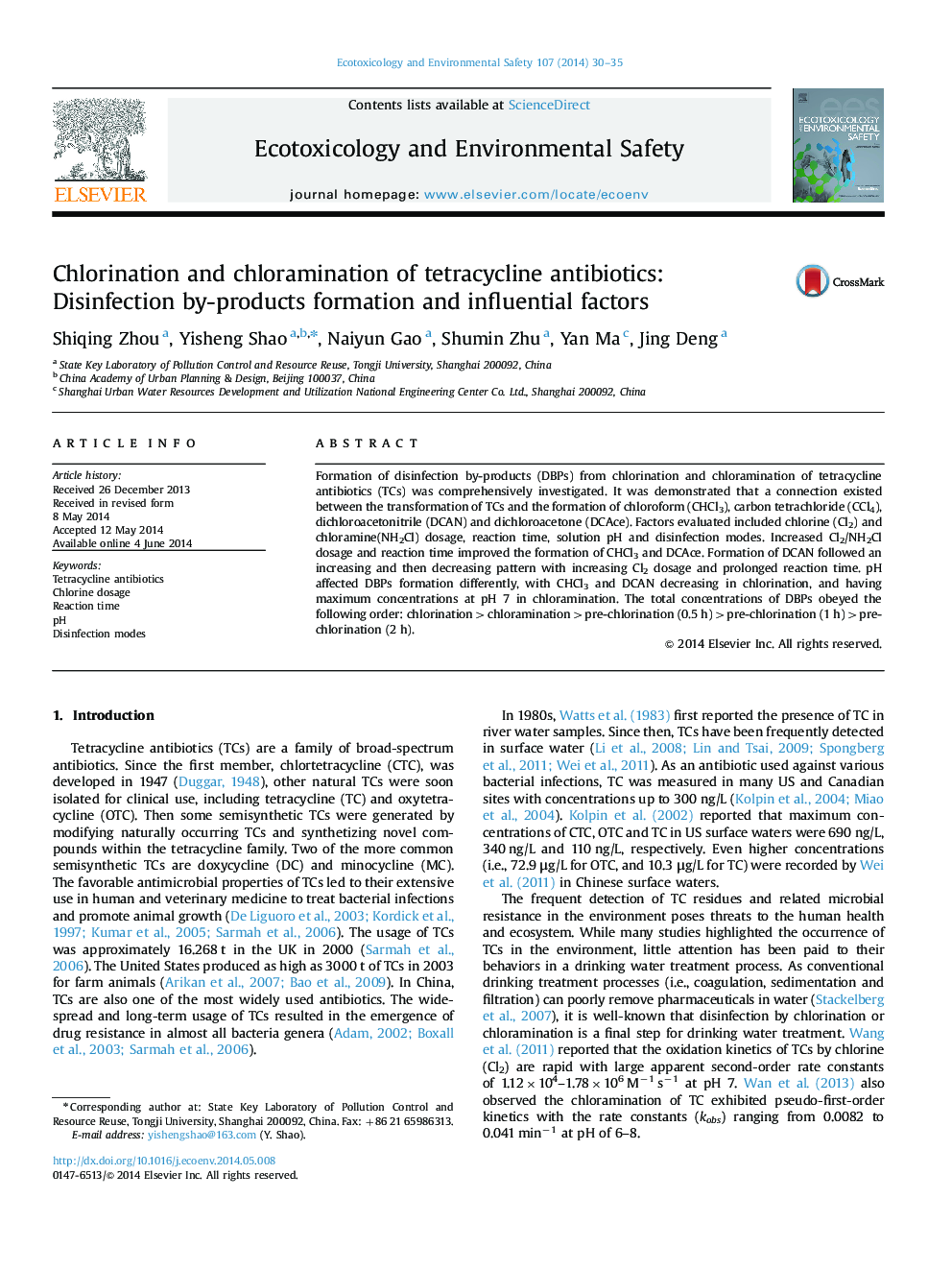| Article ID | Journal | Published Year | Pages | File Type |
|---|---|---|---|---|
| 4419957 | Ecotoxicology and Environmental Safety | 2014 | 6 Pages |
•Chloramination produced less DBPs than chlorination of TCs, except DCAN.•High Cl2 or NH2Cl dosage and extended reaction time favored CHCl3 formation.•In chlorination, CHCl3 and DCAN concentrations decreased with increasing pH.•The total DBPs obeyed the order: chlorination>chloramination>prechlorination.
Formation of disinfection by-products (DBPs) from chlorination and chloramination of tetracycline antibiotics (TCs) was comprehensively investigated. It was demonstrated that a connection existed between the transformation of TCs and the formation of chloroform (CHCl3), carbon tetrachloride (CCl4), dichloroacetonitrile (DCAN) and dichloroacetone (DCAce). Factors evaluated included chlorine (Cl2) and chloramine(NH2Cl) dosage, reaction time, solution pH and disinfection modes. Increased Cl2/NH2Cl dosage and reaction time improved the formation of CHCl3 and DCAce. Formation of DCAN followed an increasing and then decreasing pattern with increasing Cl2 dosage and prolonged reaction time. pH affected DBPs formation differently, with CHCl3 and DCAN decreasing in chlorination, and having maximum concentrations at pH 7 in chloramination. The total concentrations of DBPs obeyed the following order: chlorination>chloramination>pre-chlorination (0.5 h)>pre-chlorination (1 h)>pre-chlorination (2 h).
Graphical abstractFigure optionsDownload full-size imageDownload as PowerPoint slide
